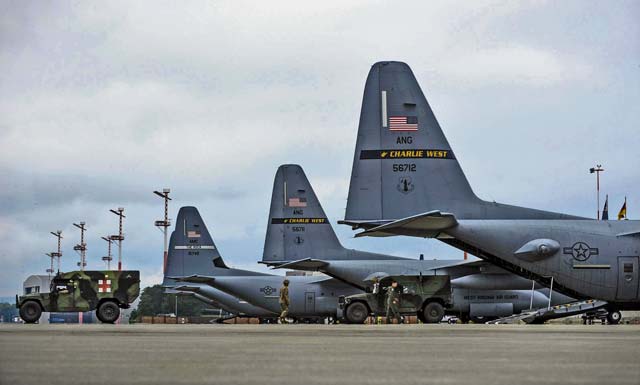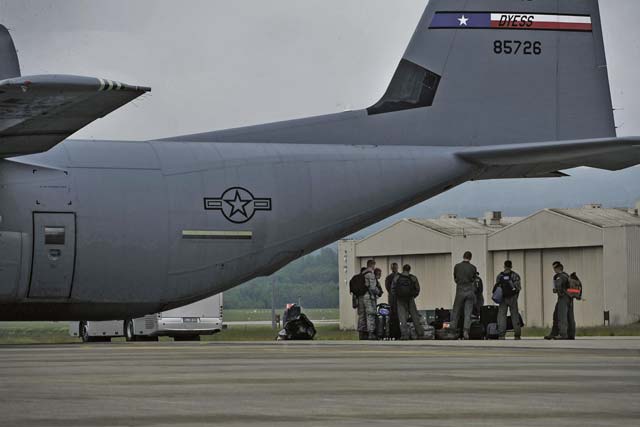
More than 5,000 military members from 10 NATO countries are participating in this year’s Swift Response training exercise from May 27 through June 26.
Swift Response is a joint, multinational exercise designed to train the U.S. global response force alongside high-readiness forces from Belgium, France, Germany, Italy, the Netherlands, Poland, Portugal, Spain and the United Kingdom.
“This exercise is the premier military crisis response training event for multinational airborne forces,” said Col. Brandon Hileman, 86th Airlift Wing vice commander. “It allows us the opportunity to train like we fight and practice with allies and multiple U.S. Army and Air Force units. During Swift Response 16, all units will be working together to enable multiple simultaneous airborne operations.”
Training opportunities such as Swift Response enable allied nations to strengthen partnerships and practice interoperability for real-world emergencies.
“It enables us to think and fight as a team when lives are on the line,” Hileman said. “Speed and responsiveness are hallmarks of NATO militaries, and the U.S. Air Force prides itself on getting around the world as fast as possible. By rehearsing military maneuvers with our allies, we can guarantee speed during a real-life crisis or dynamic situation. This interoperability is key on so many levels and instrumental in keeping our Airmen sharp and proficient.”
Each year, Swift Response takes place in two phases. The first phase is primarily in Poland while the second phase will be in Germany. These tactical locations enable members to receive the best training possible for the specific scenarios.

“Location is key to strategic access, and Ramstein Air Base provides just that,” Hileman said. “We’re ‘Forward, Ready, Now!’ We’re closer to multiple areas of responsibility and are able to generate air mobility quickly across the European theater to deter and prevent conflicts rapidly.
“Ramstein has served as a staging base for previous Swift Response exercises, so our team is very aware, prepared and able to support Swift Response 16,” Hileman continued. “This year, we will continue that, in addition to hosting allied aircraft as well. We will also have 86th Airlift Wing aircraft participating this year, contributing to the successful movement of airborne operations.”
Airman 1st Class Barry Bailey, 130th Airlift Wing crew chief, said he thinks Swift Response will not only be an exhilarating experience but also an effective way of bringing Airmen from all over together to train.
“I’m really excited to participate,” Bailey said. “This is my first time flying, so I’m looking forward to this experience. I think it’s important because it’s a learning experience, especially for all of the newer people like me. It’s a unique opportunity because we’ll be able to train in a way we wouldn’t be able to back home.”
Hileman stated that the combined capabilities allied nations have are crucial to success during training and real-world situations.
“Today’s challenges cannot be confronted alone,” Hileman said. “Exercises like this allow us the opportunity to connect in all manners to create stronger, more capable forces to ensure European and global security. It allows us to enhance our teamwork with NATO members and partner nations and also to demonstrate the speed with which we can all respond to crises around the world.”







